What is an Off-Grid Air Conditioner?
Off-grid air conditioners are a game-changer for sustainable cooling solutions, especially in remote locations. These systems harness solar energy to provide efficient and reliable temperature control without relying on traditional electricity sources. Perfect for off-grid homes, RVs, and cabins, off-grid air conditioners not only keep you comfortable but also help reduce your carbon footprint. In this comprehensive guide, we’ll dive into the various types of off grid air conditioners, the key features you should consider, and effective strategies for optimizing their performance. Whether you’re seeking energy independence or looking to enjoy the convenience of modern cooling, this blog will equip you with essential insights about off-grid air conditioning solutions.
As the demand for sustainable and independent energy solutions grows, off-grid air conditioners have emerged as a game-changer for homeowners, businesses, and remote locations. These systems operate independently of the traditional power grid, making them an ideal solution for areas with unreliable electricity or for those looking to reduce energy costs and carbon footprint.
Unlike conventional air conditioners, off-grid ACs rely on renewable energy sources, primarily solar power, to function efficiently. They are designed to work with direct current (DC) or hybrid inverter systems, enabling them to run on stored battery power when sunlight is not available.

Understanding Off-Grid Cooling Solutions
Off-grid cooling solutions go beyond simply installing solar panels to run an air conditioner. These systems are engineered to operate with minimal energy consumption while maintaining maximum cooling efficiency. There are several key components in an off-grid cooling system:
- Solar Panels – Capture sunlight and convert it into usable electricity for the AC unit.
- Charge Controller – Regulates the power flow to prevent battery overcharging.
- Battery Bank – Stores excess energy for nighttime or cloudy-day operation.
- Inverter (For Hybrid Systems) – Converts DC energy into AC power for hybrid air conditioners.
Types of Off-Grid Air Conditioning Systems
- DC-Powered Solar Air Conditioners – These units run directly on 12V, 24V, or 48V DC power, eliminating the need for an inverter, which improves energy efficiency.
- Hybrid Solar Air Conditioners – These can operate on solar power during the day and switch to grid power or battery storage at night, making them a flexible choice.
- Battery-Powered Off-Grid ACs – These systems use a high-capacity solar battery storage system to run independently even when solar energy is unavailable.
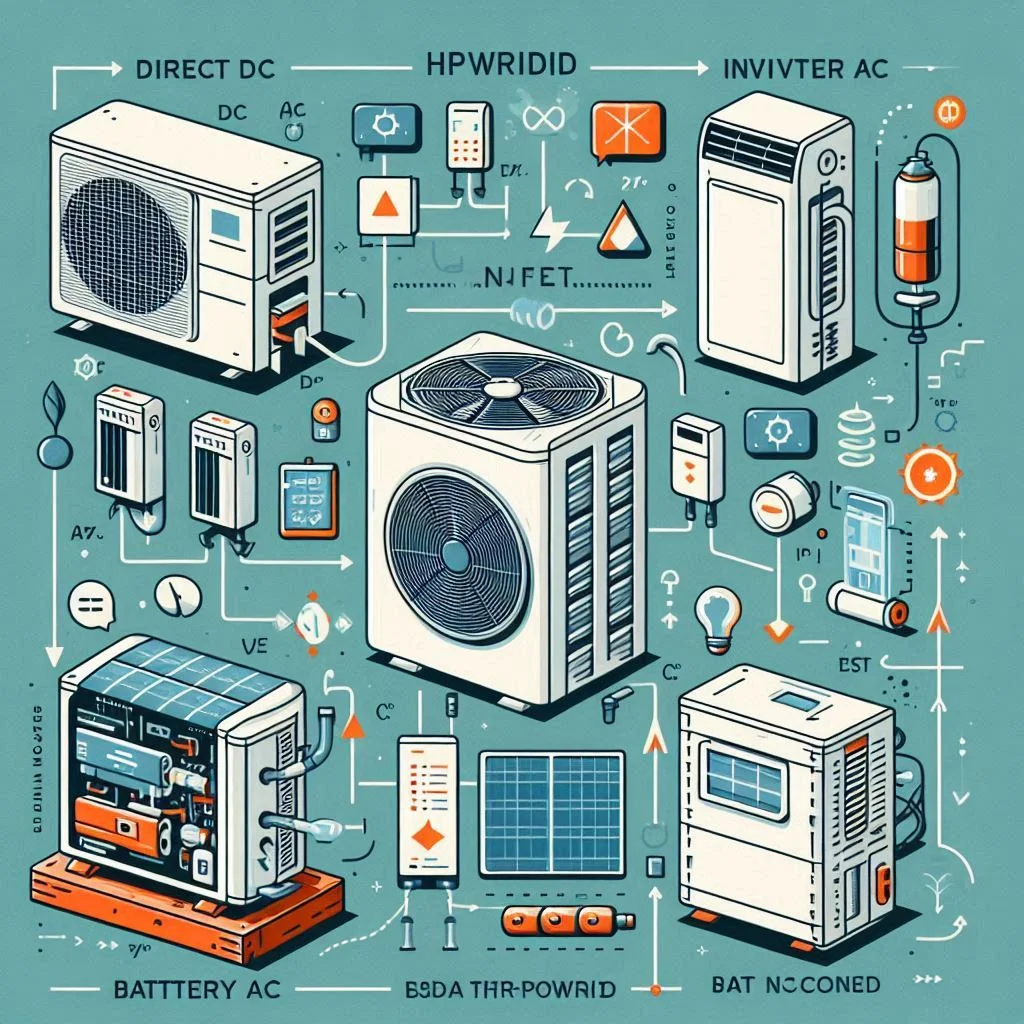
How Off-Grid AC Systems Differ from Traditional AC Units
Traditional air conditioners depend entirely on the electric grid, consuming high amounts of electricity, which increases utility bills. In contrast, off-grid air conditioning systems offer the following key advantages:
1. Energy Independence & Sustainability
With off-grid ACs, users are not reliant on power companies, making them ideal for remote locations, RVs, cabins, and eco-friendly homes. By leveraging solar power, they contribute to a reduced carbon footprint and lower energy costs.
2. Lower Operating Costs
Traditional air conditioners significantly increase electricity bills, especially during peak summer months. On the other hand, off-grid systems operate on free solar energy, making them a one-time investment with long-term savings.
3. Efficient Power Usage
- Off-grid air conditioners use inverter technology, which adjusts power consumption based on cooling demand.
- They operate on low-voltage DC power, reducing energy loss compared to standard AC units.
- Many off-grid models come with smart energy-saving features like timers, motion sensors, and WiFi control.
4. Compatibility with Battery Storage
Unlike traditional ACs, which require continuous grid electricity, off-grid air conditioners can be paired with high-capacity battery systems to provide uninterrupted cooling even at night or during cloudy weather.
5. Installation and Maintenance Differences
- Traditional ACs require professional installation with electrical connections to the grid.
- Off-grid systems are often modular, allowing for easier DIY setups, especially for portable solar-powered AC units.
- Maintenance is minimal in off-grid systems, as they lack many of the complex wiring and components found in traditional air conditioning units.
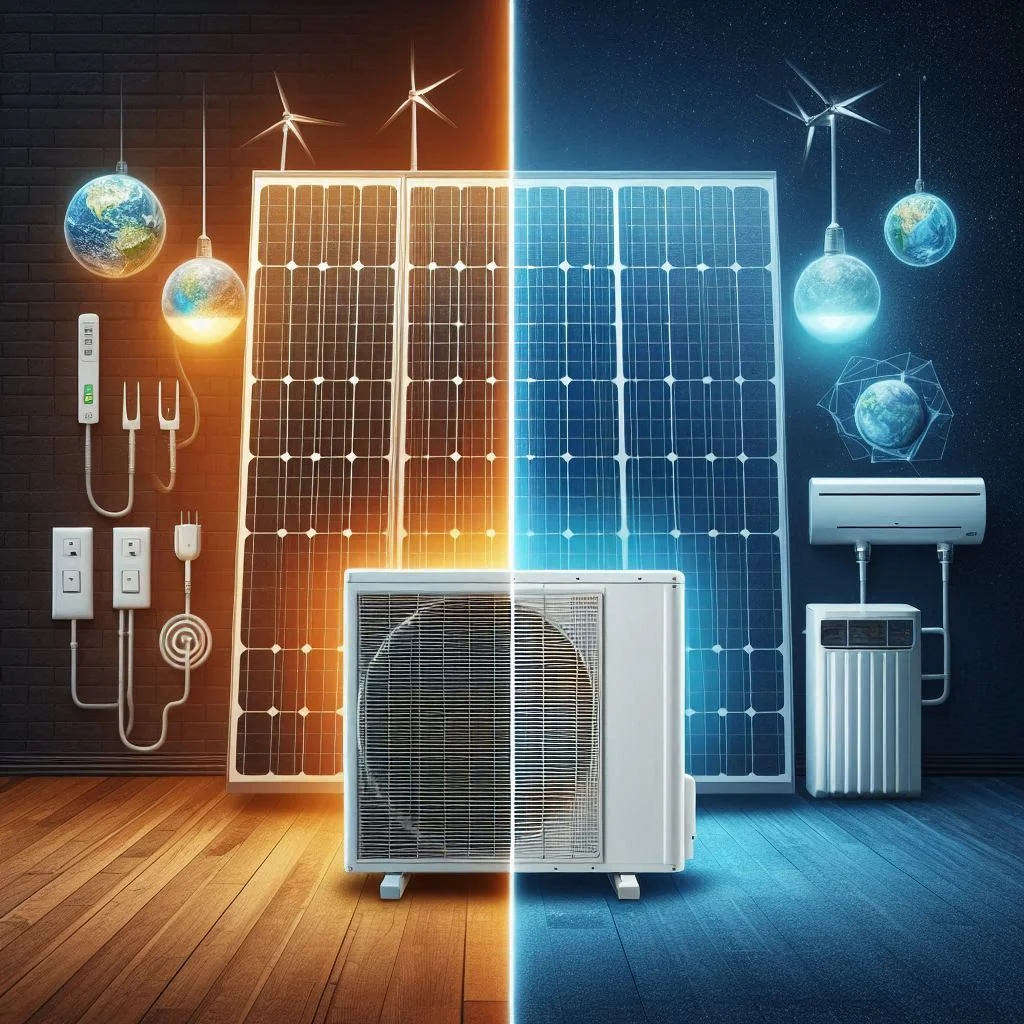
Types of Off-Grid Solar Air Conditioners
As the demand for sustainable cooling solutions grows, off-grid solar air conditioners have become an energy-efficient alternative to traditional AC units. These systems allow homeowners, businesses, and remote locations to enjoy cost-effective, eco-friendly cooling without relying on the electrical grid.
Depending on the power source, efficiency, and application, off-grid solar air conditioners are categorized into three main types:
- DC-Powered Solar Air Conditioners
- Hybrid Solar Inverter Air Conditioners
- Standalone Off-Grid AC Units with Battery Storage
Each of these systems has unique benefits, making them suitable for different energy setups and cooling needs.
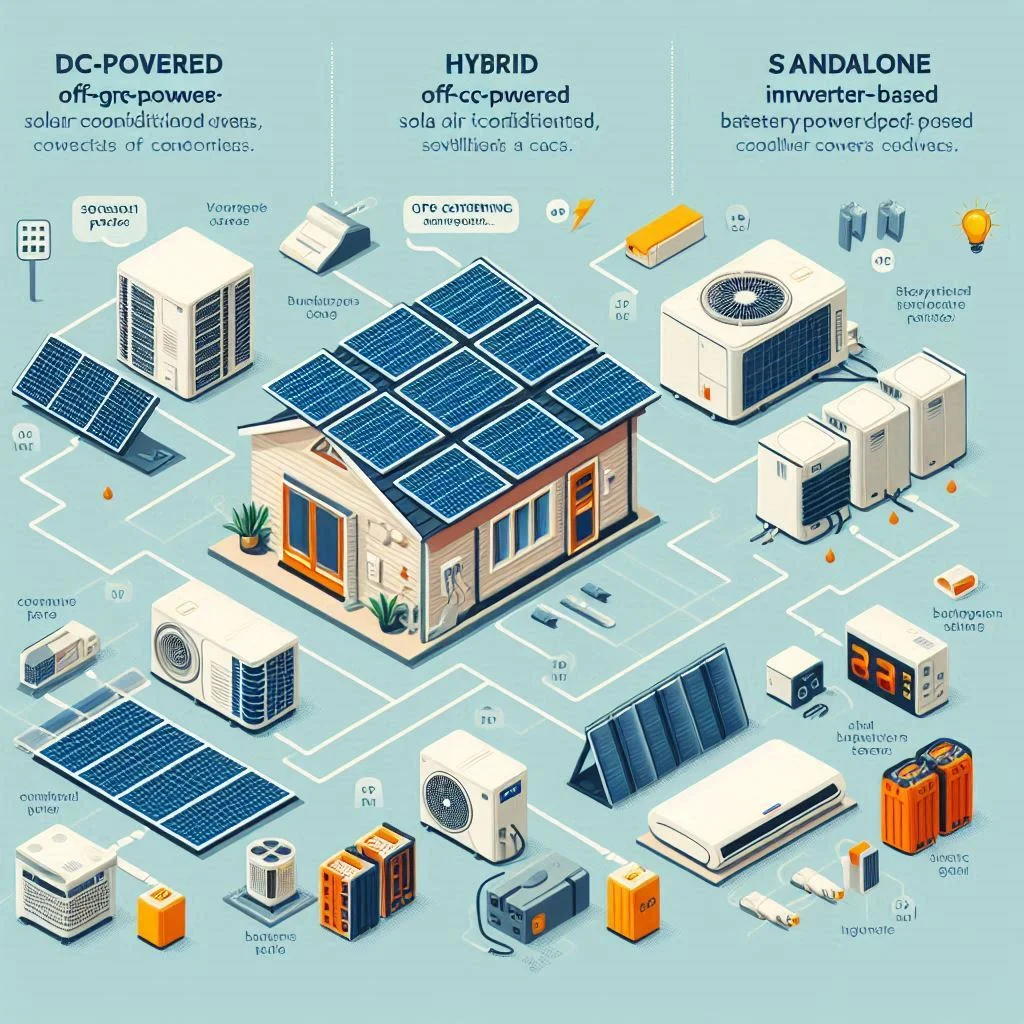
DC-Powered Solar Air Conditioners (12V, 24V, 48V, 220V, 110V Options)
DC-powered solar air conditioners are one of the most efficient cooling solutions for off-grid setups. These systems run directly on direct current (DC) electricity, eliminating the need for an inverter, which reduces energy conversion losses and enhances efficiency.
Key Features of DC-Powered Solar Air Conditioners:
✔ Runs directly on solar power (12V, 24V, 48V, 110V, or 220V options)
✔ No inverter required, leading to higher efficiency
✔ Compatible with battery storage for continuous operation
✔ Lower energy consumption compared to traditional ACs
✔ Suitable for RVs, tiny homes, cabins, and mobile setups
How They Work:
- Solar panels generate DC power from sunlight.
- The power is either used immediately to run the AC or stored in batteries for later use.
- The DC compressor inside the AC unit adjusts power consumption based on cooling needs, maximizing efficiency.
Best Applications:
- Remote cabins and off-grid homes
- RVs and mobile homes
- Small offices and eco-friendly houses
- Boats and marine applications
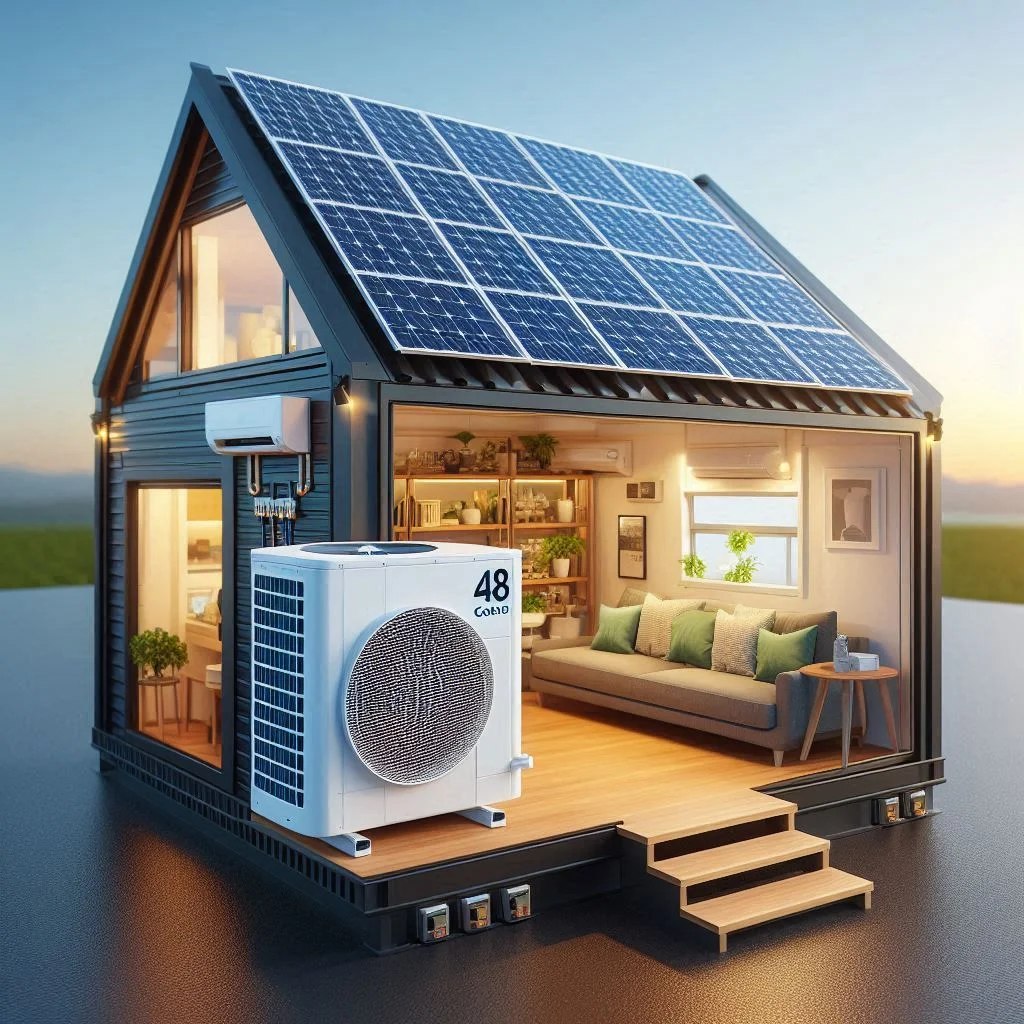
Hybrid Solar Inverter Air Conditioners (AC/DC Compatibility)
Hybrid solar air conditioners offer flexibility and reliability by supporting both solar power and grid electricity. These systems are designed to automatically switch between solar energy, battery storage, and grid power, ensuring uninterrupted cooling even during low sunlight conditions.
Key Features of Hybrid Solar ACs:
✔ Can operate on solar panels, batteries, or grid power
✔ Smart inverter technology adjusts power consumption based on sunlight availability
✔ Reduces dependency on the power grid, cutting electricity costs
✔ Works with standard home wiring, making installation easier
✔ Ideal for regions with partial sunlight or unstable grid electricity
How They Work:
- During the day, the air conditioner runs primarily on solar power.
- If solar energy is insufficient, the system draws power from battery storage.
- At night or during cloudy weather, the unit automatically switches to grid power for continuous operation.
Best Applications:
- Homes with partial solar setups
- Off-grid homes with occasional grid access
- Businesses and offices reducing energy costs
- Areas with unstable electricity supply
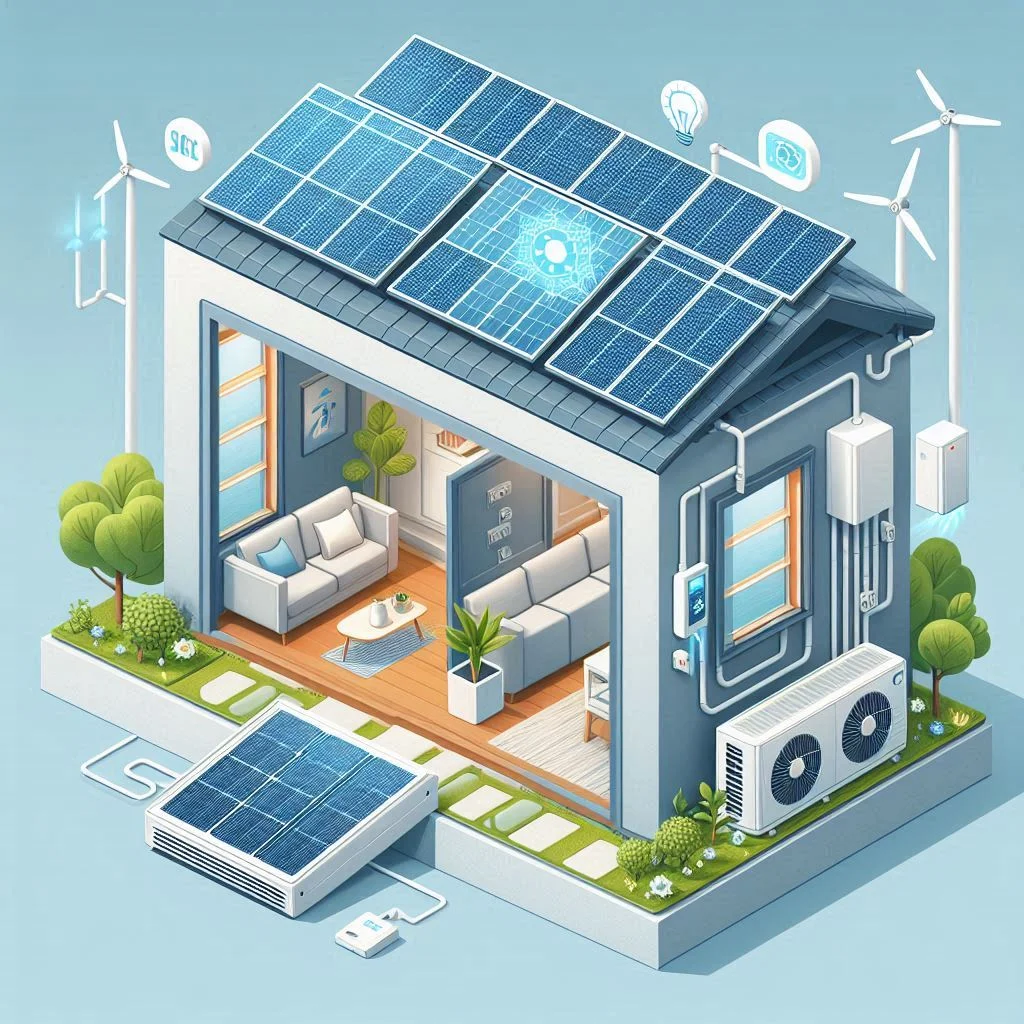
Standalone Off-Grid AC Units with Battery Storage
For complete energy independence, standalone off-grid AC units are the best choice. These systems operate entirely on solar panels and battery storage, making them ideal for remote locations with no grid access.
Key Features of Standalone Off-Grid ACs:
✔ 100% solar-powered, requiring no external electricity
✔ Large battery banks provide power at night or during cloudy days
✔ Designed for high-efficiency cooling with minimal power usage
✔ Best option for remote homes, cabins, or disaster-prone areas
✔ Advanced models come with smart controls for energy optimization
How They Work:
- Solar panels charge high-capacity batteries during the day.
- The stored energy powers the air conditioner at night or when sunlight is low.
- Energy-efficient DC compressors reduce power consumption while providing consistent cooling.
Best Applications:
- Completely off-grid homes and cabins
- Remote areas with no electricity access
- Emergency backup cooling for disaster-prone regions
- Eco-friendly buildings and sustainable communities
Key Features to Look for in an Off-Grid Air Conditioner
Choosing the right off-grid air conditioner requires careful consideration of various features to ensure energy efficiency, reliable cooling, and long-term performance. Unlike conventional AC units, off-grid models rely on solar power, battery storage, or hybrid systems, making it essential to select an AC with the right power consumption, cooling capacity, and advanced technology to maximize efficiency.
This guide covers the key features that determine the effectiveness of an off-grid air conditioner:
- Energy Efficiency and Power Consumption
- Cooling Capacity: 9000BTU to 24000BTU Options
- Advanced Technologies: Inverter Compressors, Smart Controls, and More
By understanding these features, you can select an off-grid AC system that provides optimal cooling while minimizing energy usage.
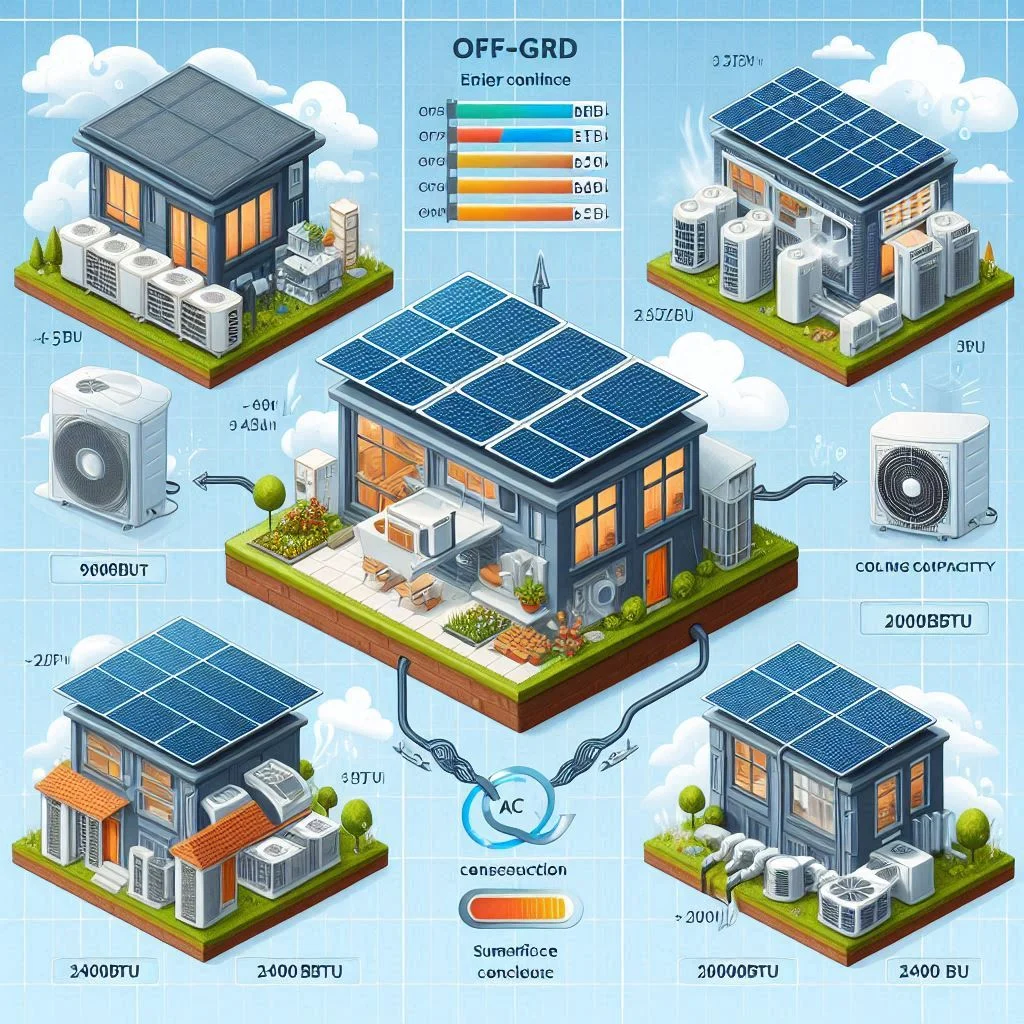
Energy Efficiency and Power Consumption
Energy efficiency is one of the most important factors when selecting an off-grid air conditioner. Since these units often rely on solar panels and battery storage, optimizing power consumption ensures longer cooling hours without excessive energy drain.
Key Factors Affecting Energy Efficiency:
✔ SEER (Seasonal Energy Efficiency Ratio) Rating – A higher SEER rating indicates better efficiency, reducing overall energy consumption.
✔ DC-Powered vs. AC-Powered Units – DC-powered air conditioners (12V, 24V, 48V) are more efficient because they don’t require an inverter, reducing power losses.
✔ Hybrid Power Capability – Some off-grid ACs switch between solar, battery, and grid power, ensuring efficiency based on available energy sources.
✔ Eco Mode & Variable Speed Compressors – Advanced systems adjust power consumption based on cooling demand, preventing unnecessary energy waste.
✔ Battery Compatibility – Choosing an AC compatible with high-capacity solar batteries allows for continuous cooling even at night.
How to Choose the Most Efficient Off-Grid AC?
- Look for models with high SEER ratings (16+ recommended for solar setups).
- Choose inverter-based air conditioners to reduce power fluctuations.
- Select an AC with low starting wattage to prevent excessive energy draw from batteries.

Cooling Capacity: 9000BTU to 24000BTU Options
Cooling capacity, measured in British Thermal Units (BTU), determines how effectively an air conditioner cools a given space. The right BTU rating ensures that the AC unit efficiently maintains the desired temperature without overloading the solar energy system.
Choosing the Right BTU Rating for Your Space:
| BTU Capacity | Cooling Area (Square Feet) | Best For |
|---|---|---|
| 9000 BTU | Up to 300 sq. ft. | Small rooms, cabins, RVs |
| 12000 BTU | 300 – 500 sq. ft. | Medium-sized rooms, tiny homes |
| 18000 BTU | 500 – 800 sq. ft. | Larger living spaces, off-grid homes |
| 24000 BTU | 800 – 1200 sq. ft. | Large homes, commercial spaces |
Factors Affecting BTU Requirements:
✔ Climate Conditions – Hotter regions may require a higher BTU rating.
✔ Room Insulation – Well-insulated spaces need less cooling power.
✔ Number of Occupants & Appliances – More people and electronic devices increase heat levels.
Best Practices for Choosing BTU Capacity:
- Avoid oversizing – An AC with too high a BTU rating cycles on and off frequently, wasting energy.
- Avoid undersizing – A low BTU rating results in continuous operation, increasing power consumption.
- Opt for an inverter model – These adjust cooling output based on the room’s needs, improving efficiency.
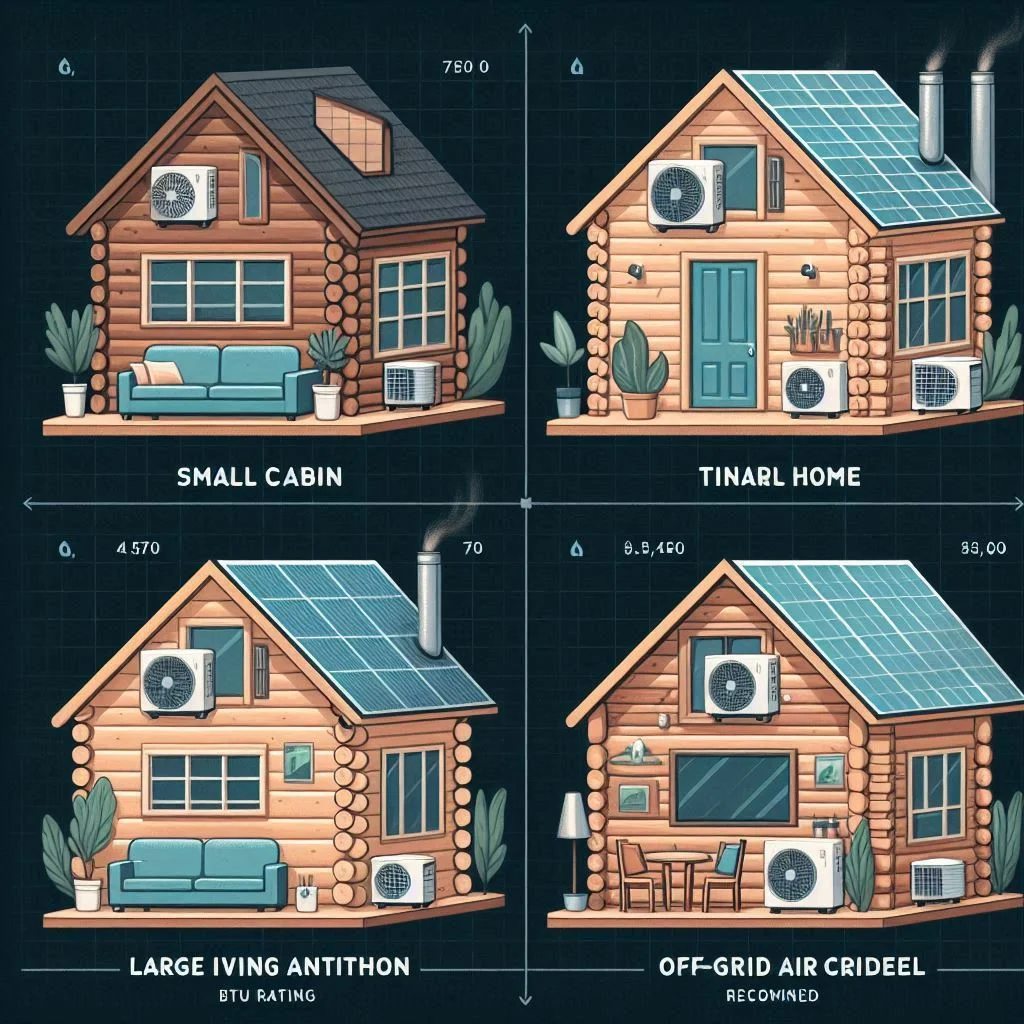
Advanced Technologies: Inverter Compressors, Smart Controls, and More
Modern off-grid air conditioners come with advanced features designed to improve energy efficiency, user convenience, and system longevity. These technologies make solar air conditioners more effective and eco-friendly.
1. Inverter Compressors for Energy Savings
Traditional AC units cycle on and off, causing sudden power spikes that strain solar batteries. Inverter compressors adjust the cooling speed gradually, maintaining a consistent temperature while using 30-50% less power.
✔ Reduces power consumption by adjusting speed instead of turning off/on.
✔ Extends battery life by preventing excessive power draw.
✔ Ensures stable cooling performance even in fluctuating solar energy conditions.
2. Smart Controls & Wi-Fi Connectivity
Many off-grid air conditioners now feature smart controls, allowing users to monitor and adjust cooling settings remotely.
✔ Wi-Fi/App-Based Controls – Adjust temperature, set schedules, and track energy usage via smartphone apps.
✔ AI-Powered Cooling – Some models use artificial intelligence to learn usage patterns and optimize energy consumption.
✔ Remote Start/Stop – Ideal for vacation homes and off-grid cabins where users want to cool spaces before arriving.
3. Battery & Solar Panel Integration
✔ Lithium-Ion & Deep Cycle Battery Support – Provides extended runtime at night.
✔ MPPT Solar Charge Controllers – Maximizes power efficiency from solar panels.
✔ DC-AC Hybrid Switching – Allows automatic switching between solar and grid power when needed.
How to Power an Off-Grid Air Conditioner Efficiently
Running an off-grid air conditioner efficiently requires careful planning of your solar panel system, battery storage, and energy optimization strategies. Since these AC units rely on solar energy or hybrid systems, ensuring a steady power supply is crucial for maintaining consistent cooling without excessive energy drain.
This guide covers:
- Choosing the Right Solar Panel System
- Battery Backup and Storage Solutions
- Optimizing Energy Consumption for Maximum Efficiency
By understanding these factors, you can maximize performance, extend battery life, and ensure uninterrupted cooling in off-grid environments.
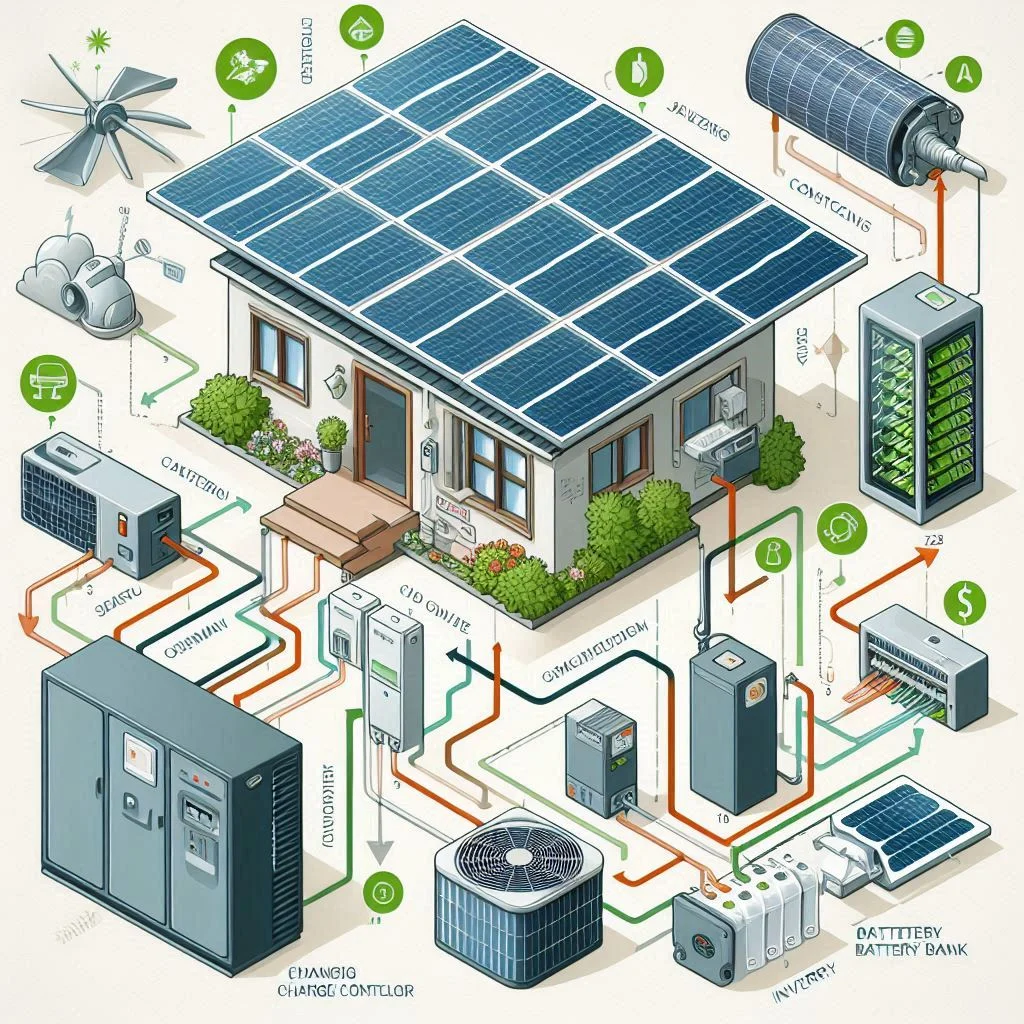
Choosing the Right Solar Panel System
The foundation of an efficient off-grid air conditioner setup is selecting the right solar panel system. The number and type of solar panels you need depend on your AC’s power consumption, daily usage hours, and battery storage capacity.
1. Calculating Solar Panel Requirements
To determine the number of solar panels needed:
-
Find the power consumption of your AC unit.
- Example: A 12000BTU inverter AC consumes around 900-1200W per hour.
-
Estimate daily energy usage.
- If the AC runs for 6 hours daily, it requires:
1000W × 6 hours = 6000Wh (or 6kWh).
- If the AC runs for 6 hours daily, it requires:
-
Calculate required solar panel capacity.
- A 300W solar panel produces about 1.2-1.5kWh per day (based on sunlight availability).
- To generate 6kWh daily, you need:
6000Wh ÷ 1500Wh = 4 solar panels (300W each).
2. Types of Solar Panels for Off-Grid AC
| Solar Panel Type | Efficiency | Best For |
|---|---|---|
| Monocrystalline | 18-22% | High efficiency, compact setups |
| Polycrystalline | 15-18% | Budget-friendly, moderate efficiency |
| Thin-Film | 10-12% | Lightweight, flexible applications |
3. Key Considerations When Choosing Solar Panels
✔ Sunlight Availability – More sun hours = fewer panels needed.
✔ Panel Orientation & Tilt – Optimizes energy production.
✔ MPPT Charge Controller – Increases solar charging efficiency by 15-30%.
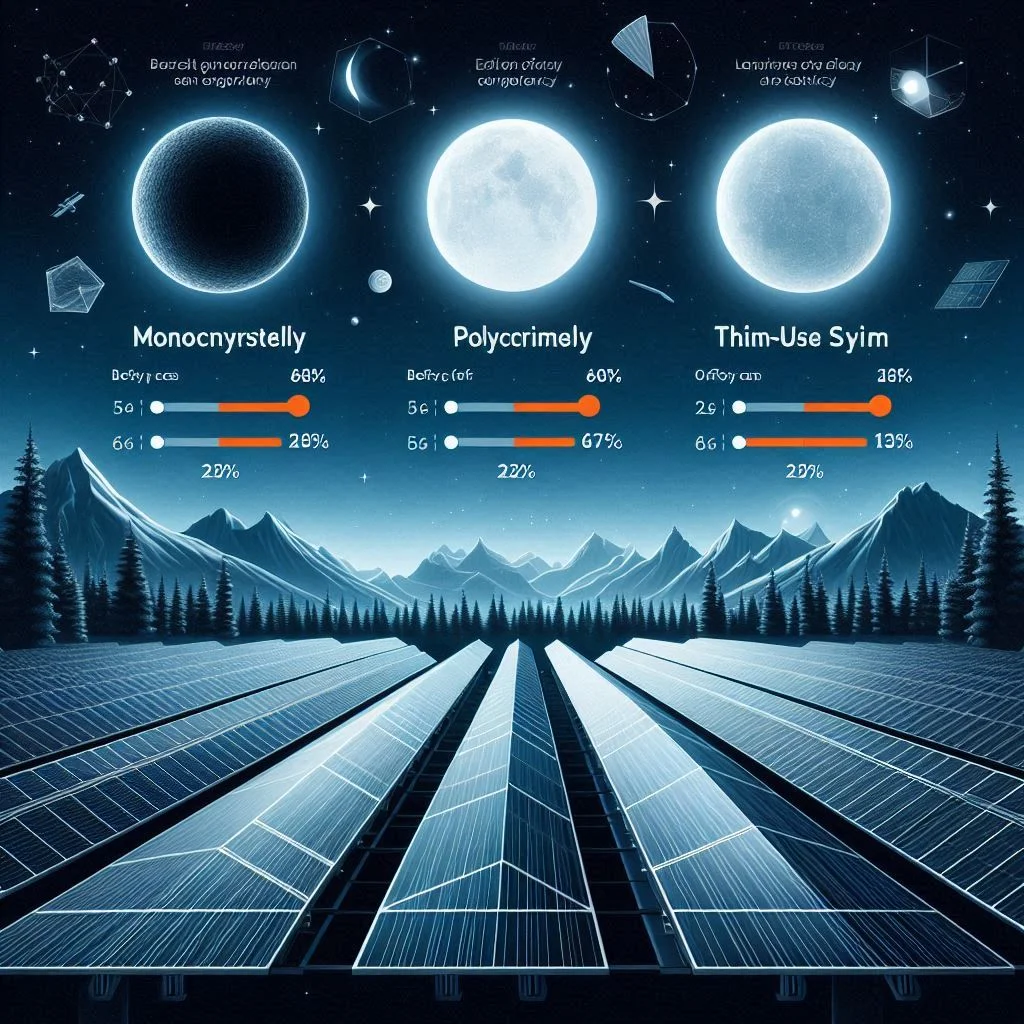
Battery Backup and Storage Solutions
Since solar energy isn’t available 24/7, battery storage is crucial for running an off-grid air conditioner, especially during cloudy days or at night.
1. How Much Battery Capacity Do You Need?
- Determine AC energy usage per day (e.g., 6kWh for a 12000BTU unit).
- Consider battery depth of discharge (DOD):
- Lead-acid batteries: 50% usable capacity.
- Lithium-ion batteries: 80-90% usable capacity.
- Calculate battery storage needs:
- If using lithium-ion (80% DOD), you need:
6kWh ÷ 0.8 = 7.5kWh battery capacity.
- If using lithium-ion (80% DOD), you need:
2. Best Battery Types for Off-Grid ACs
| Battery Type | Advantages | Disadvantages |
|---|---|---|
| Lithium-Ion (LiFePO4) | High efficiency, long lifespan, deep discharge | Expensive upfront |
| Lead-Acid (AGM/Gel) | Affordable, widely available | Lower lifespan, needs more space |
| Saltwater Batteries | Eco-friendly, non-toxic | Lower efficiency, limited availability |
3. How to Maximize Battery Life
✔ Use a Battery Management System (BMS) – Prevents overcharging & deep discharges.
✔ Charge batteries during peak sunlight hours – Ensures full recharge daily.
✔ Combine batteries with MPPT controllers – Enhances efficiency & extends battery lifespan.
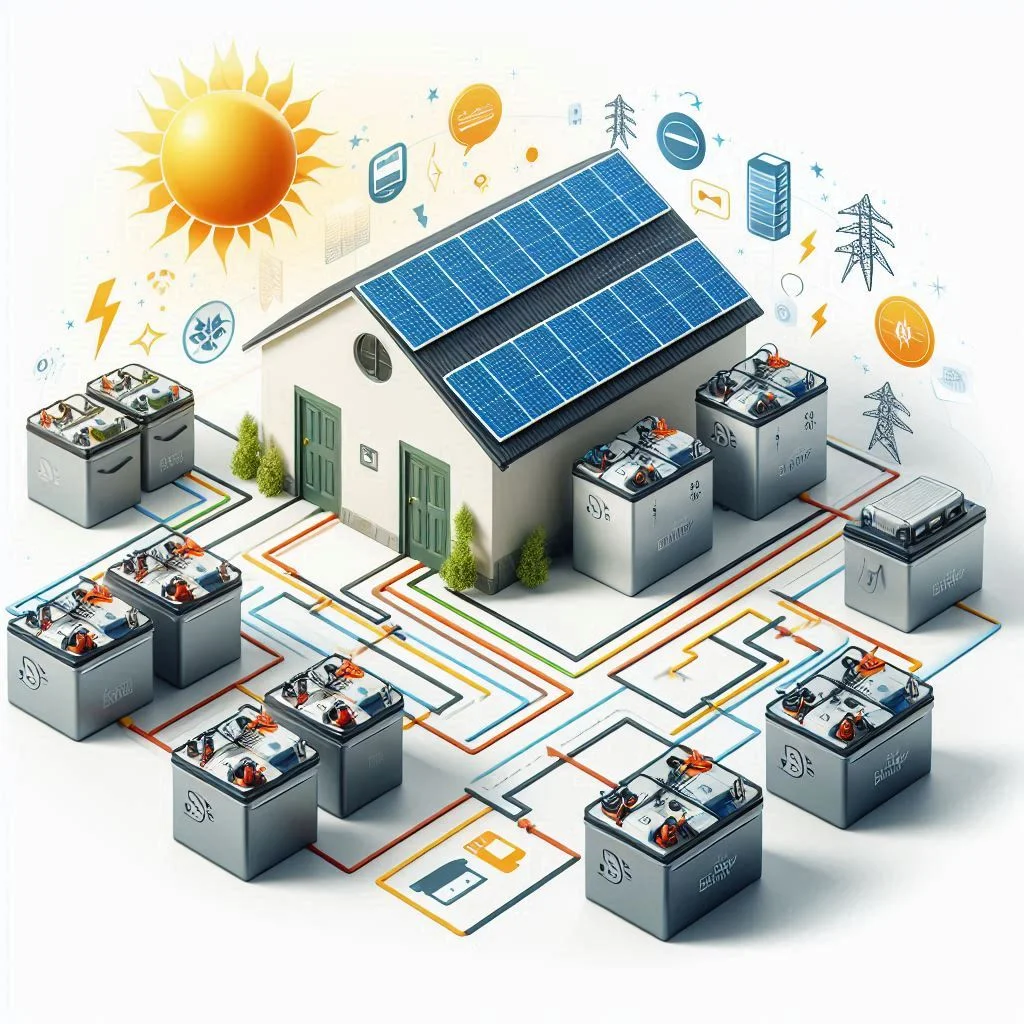
Optimizing Energy Consumption for Maximum Efficiency
Even with a well-designed solar and battery system, maximizing efficiency is essential to extend cooling hours and reduce energy waste.
1. Use Energy-Efficient Off-Grid Air Conditioners
✔ Inverter Air Conditioners – Adjust cooling speed dynamically, saving 30-50% energy.
✔ DC-Powered Air Conditioners – Avoid energy losses from inverters, reducing overall power draw.
✔ Hybrid AC Models – Switch between solar, battery, and grid power as needed.
2. Improve Home Insulation & Ventilation
✔ Seal Windows & Doors – Prevents cool air from escaping.
✔ Use Reflective Roof Coatings – Reduces heat absorption.
✔ Install Ceiling Fans – Enhances airflow, reducing cooling demand.
3. Implement Smart Energy Management
✔ Use Timers & Thermostats – Run AC only when needed.
✔ Program AC to Eco Mode – Reduces power usage without sacrificing comfort.
✔ Monitor Energy Consumption – Use smart meters or mobile apps to track and adjust usage.
Best Off-Grid Air Conditioner Models and Brands
Choosing the best off-grid air conditioner is crucial for maintaining a comfortable indoor temperature while maximizing energy efficiency. The top brands in the market focus on solar compatibility, inverter technology, and hybrid energy systems to provide reliable cooling even in remote locations.
This guide highlights:
- Puremind Off-Grid Solar Air Conditioners
- Sunpal Hybrid Solar AC Systems
- LG Dual Inverter Air Conditioners for Off-Grid Use
By selecting a high-performance off-grid AC, you can achieve efficient cooling with minimal energy waste.
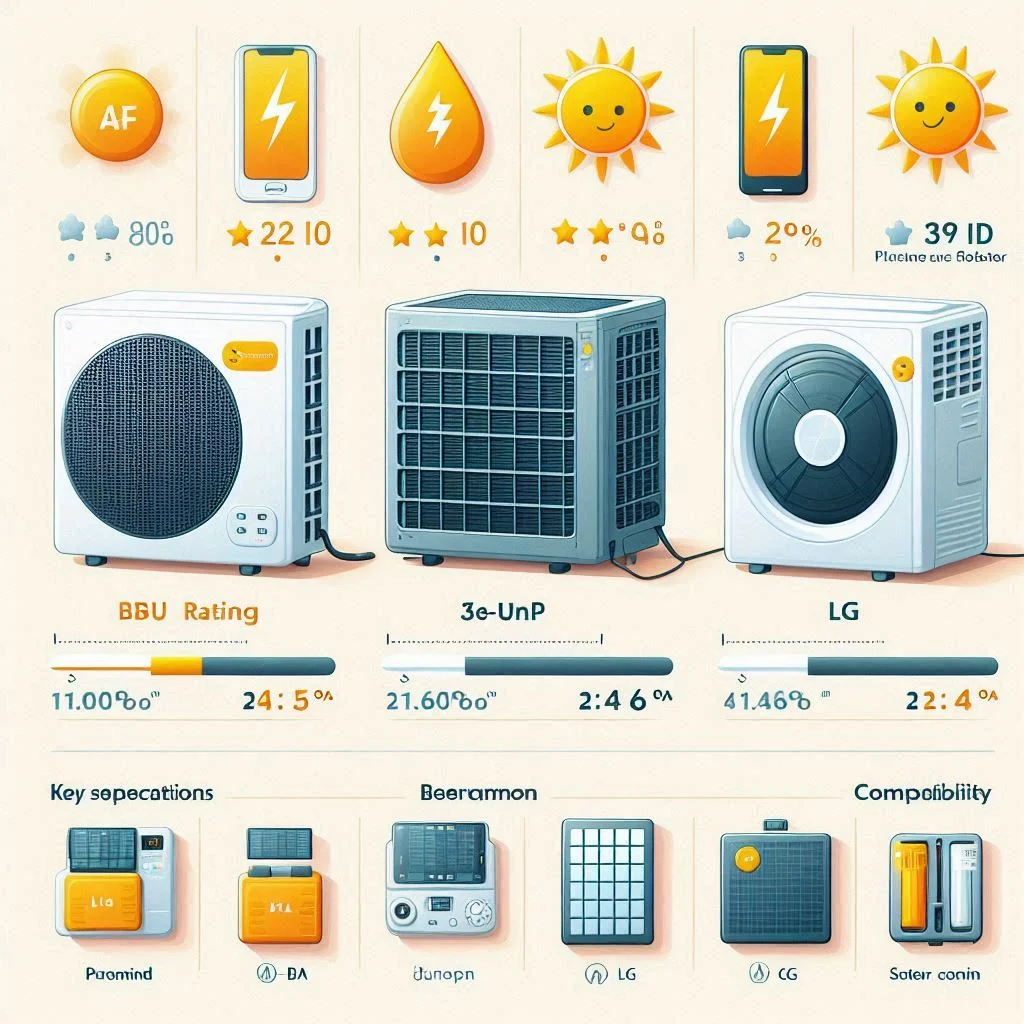
Puremind Off-Grid Solar Air Conditioners (9000BTU – 24000BTU)
Puremind is a leading brand in off-grid air conditioning, known for its high-efficiency inverter technology and solar power compatibility. These AC units are designed for homes, RVs, and remote locations, offering sustainable cooling without relying on the electrical grid.
1. Key Features of Puremind Solar Air Conditioners
✔ Available in Multiple BTU Capacities:
- 9000BTU – Ideal for small rooms or cabins.
- 12000BTU – Perfect for medium-sized living spaces.
- 18000BTU – 24000BTU – Suitable for large areas and commercial spaces.
✔ DC & Hybrid Operation:
- Works on DC power (12V, 24V, 48V, or 220V options).
- Can switch to AC power when needed for uninterrupted operation.
✔ High SEER Ratings for Efficiency:
- Reduces energy consumption by up to 50% compared to traditional ACs.
✔ WiFi & Smart Control Features:
- Mobile app integration for remote control and scheduling.
2. Why Choose Puremind for Off-Grid Cooling?
✅ Works 100% on solar power – No grid dependency.
✅ Smart energy-saving features – Adaptive cooling technology.
✅ Low noise operation – Perfect for indoor use without disturbance.
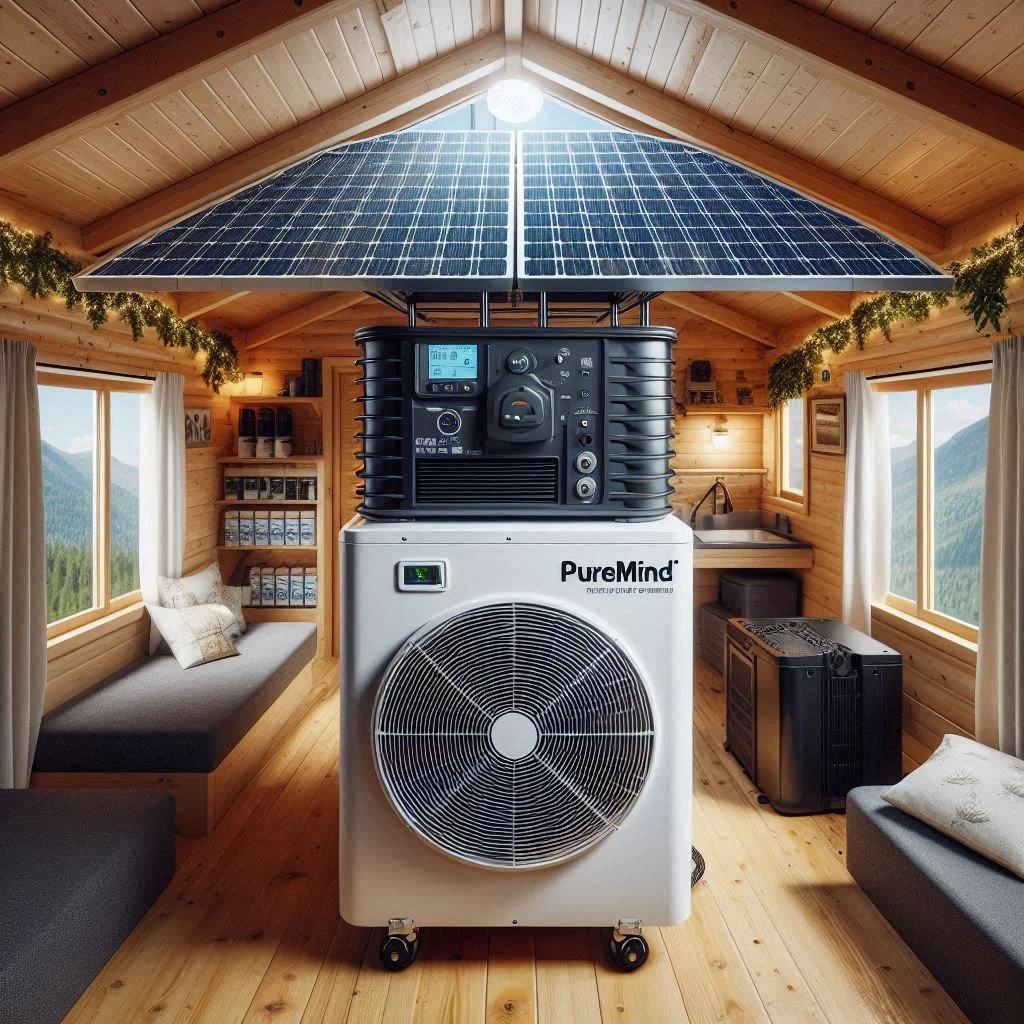
Sunpal Hybrid Solar AC Systems
Sunpal specializes in hybrid solar air conditioning solutions, allowing users to seamlessly switch between solar and grid power. These systems are perfect for areas with unpredictable sunlight exposure or frequent power outages.
1. Key Features of Sunpal Hybrid ACs
✔ Hybrid Functionality:
- Uses solar energy during the day and switches to grid power at night if needed.
✔ Solar MPPT Technology for Maximum Efficiency:
- Converts solar energy with up to 98% efficiency to power the AC.
✔ Wide Voltage Compatibility:
- Supports DC 48V, 220V, and AC 110V – Works in different regions worldwide.
✔ Built-In Battery Support:
- Compatible with lithium-ion and lead-acid battery banks.
2. Advantages of Sunpal Hybrid ACs
✅ Seamless transition between solar and grid power.
✅ Lower upfront cost compared to fully off-grid models.
✅ Ideal for homes, offices, and commercial buildings.
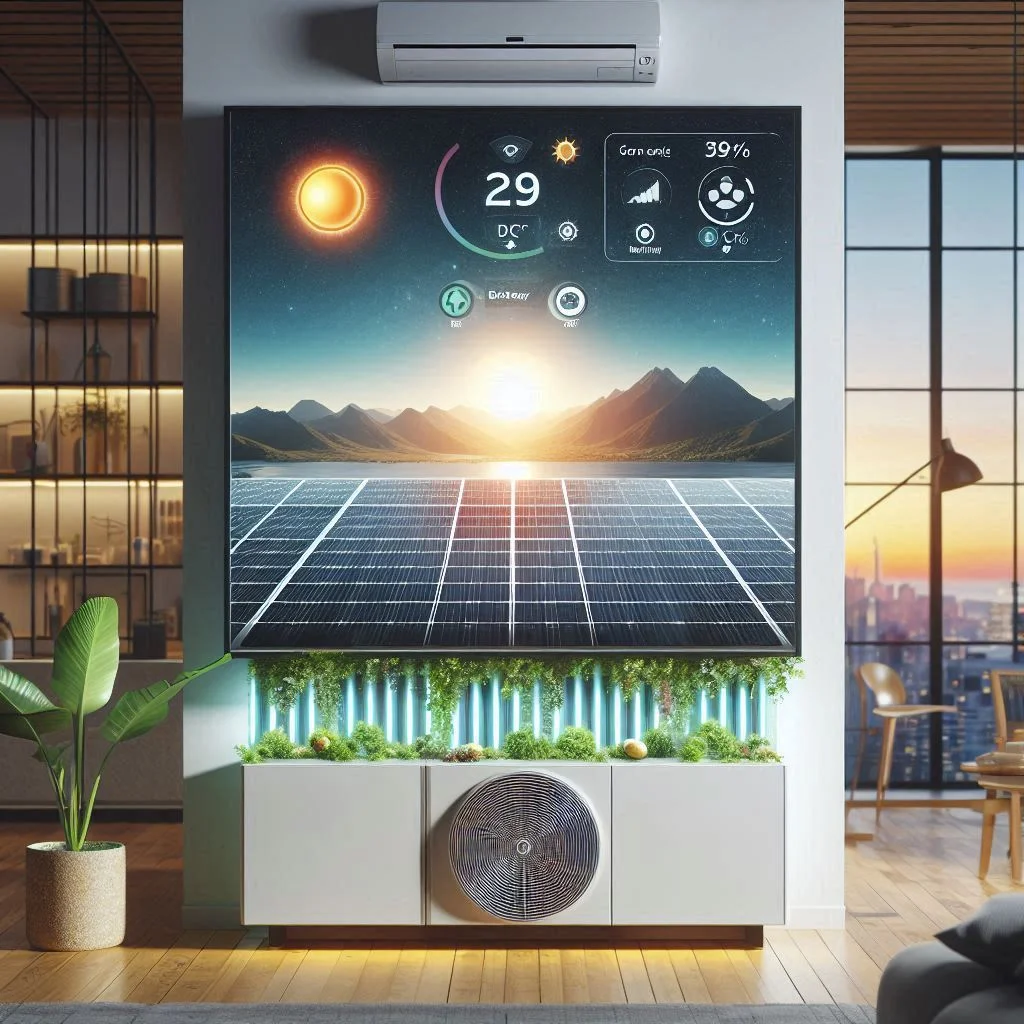
LG Dual Inverter Air Conditioners for Off-Grid Use
While LG does not produce fully solar-powered AC units, their Dual Inverter air conditioners are one of the most energy-efficient choices for off-grid systems when combined with a solar inverter setup.
1. Key Features of LG Dual Inverter ACs
✔ Ultra-Efficient Inverter Technology:
- Consumes up to 40% less energy than traditional ACs.
- Variable-speed compressor adjusts cooling to save power.
✔ Smart Home Integration:
- Compatible with Google Home & Alexa for voice control.
✔ Multiple Cooling Modes for Maximum Efficiency:
- Energy-saving mode, dehumidifier function, and fast cooling mode.
✔ Battery & Solar Inverter Compatibility:
- Can be used with off-grid solar systems + battery storage.
2. Why Consider LG for Off-Grid Air Conditioning?
✅ Best energy-efficient option for hybrid solar systems.
✅ Trusted global brand with reliable performance.
✅ Affordable alternative to dedicated solar ACs.
FAQs About Off-Grid Air Conditioners
Off-grid air conditioners provide energy-efficient cooling solutions for remote locations, cabins, RVs, and off-grid homes. Whether you’re considering a hybrid solar AC or a fully off-grid model, understanding the power requirements, lifespan, and overall investment value is crucial. Below, we answer some of the most common questions about off-grid air conditioners.

How Much Solar Power is Needed to Run an Off-Grid Air Conditioner?
The amount of solar power required to run an off-grid air conditioner depends on three main factors:
- BTU rating of the AC unit (Cooling capacity)
- Energy efficiency (SEER rating)
- Daily usage hours
1. Solar Power Calculation for Off-Grid AC Units
For a 12000 BTU solar air conditioner, you typically need:
✔ 1.2 – 1.5 kW of solar panels (4-6 solar panels of 300W each)
✔ A 48V battery bank for backup power
✔ An efficient MPPT solar charge controller to manage energy flow
For a 24000 BTU off-grid AC, the system should include:
✔ 3-5 kW of solar panels (10-15 solar panels of 300W each)
✔ A 48V to 96V battery system
✔ An inverter rated at least 5000W
By optimizing energy storage and panel placement, you can ensure consistent cooling performance without relying on the grid.
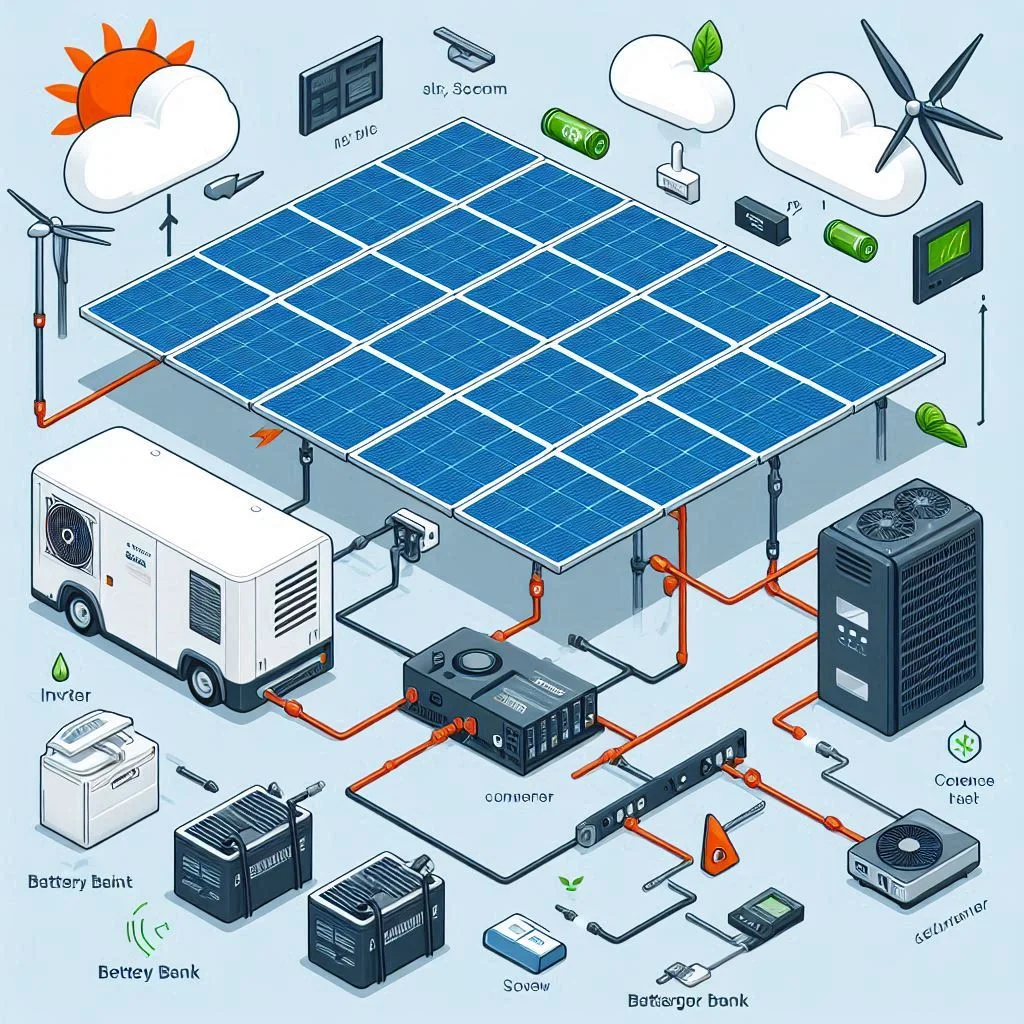
What is the Difference Between Hybrid and Fully Off-Grid Solar ACs?
There are two main types of solar-powered air conditioners:
1. Hybrid Solar Air Conditioners
✔ Can run on both solar and grid power
✔ Automatically switches to grid electricity if solar energy is insufficient
✔ Lower initial cost compared to fully off-grid models
✔ Best for locations with partial sun exposure or unpredictable weather
2. Fully Off-Grid Solar Air Conditioners
✔ 100% powered by solar energy
✔ Uses a DC compressor for higher efficiency
✔ Requires a battery bank for nighttime operation
✔ Best for remote locations with no grid access
Which one should you choose?
If you live in a location with stable solar energy, a fully off-grid system is ideal. If you need backup power options, a hybrid AC provides flexibility.
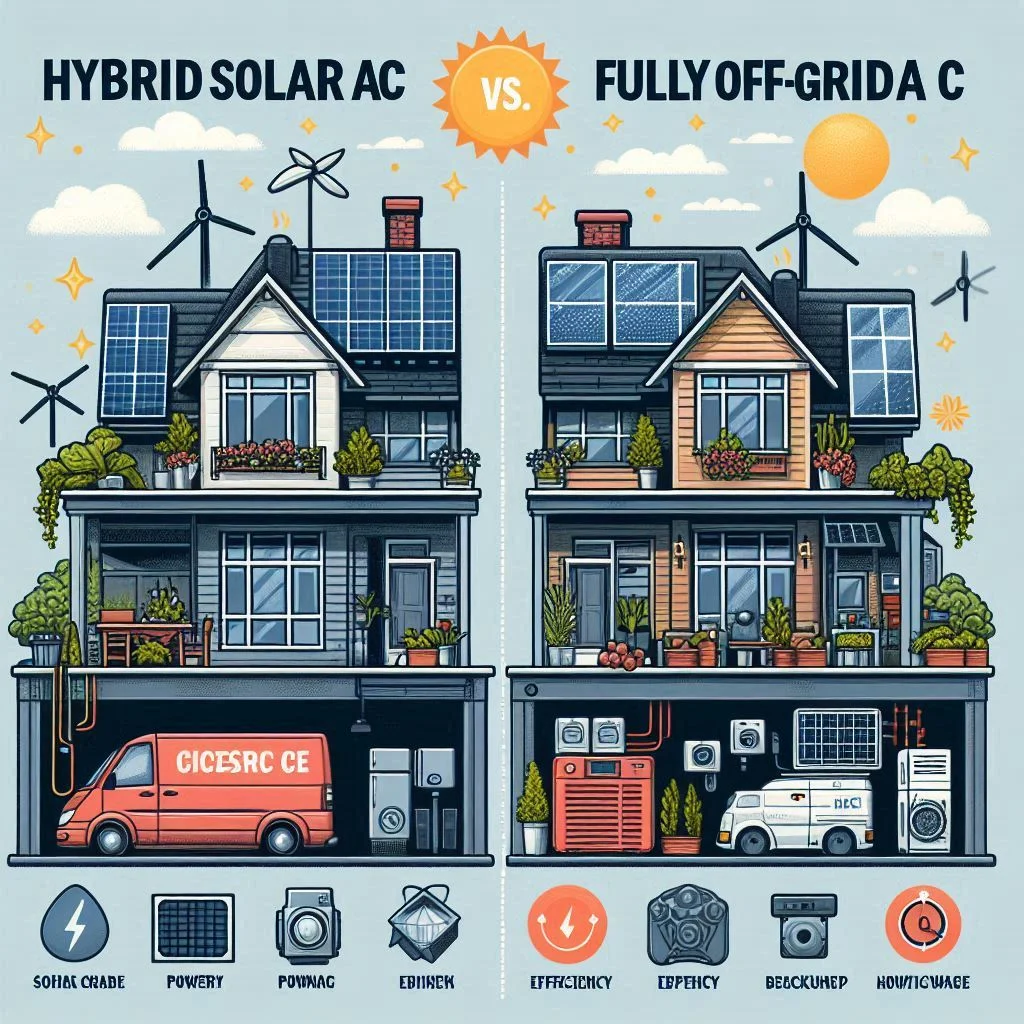
Can an Off-Grid Air Conditioner Run Without Batteries?
Yes, some DC-powered off-grid ACs can operate without batteries during the daytime when solar power is sufficient. However, using batteries provides major advantages:
✔ Ensures uninterrupted cooling during cloudy days and at night
✔ Prevents energy waste by storing excess solar power
✔ Reduces strain on solar panels, extending their lifespan
1. When Can You Skip Batteries?
- If your off-grid AC has a direct solar panel connection
- If you only need cooling during the day
2. When Are Batteries Necessary?
- If you need 24/7 cooling
- If your location experiences variable sunlight conditions
- If your AC requires consistent power stability
To ensure the best performance, combining solar panels with batteries is always recommended.
What is the Lifespan of an Off-Grid Solar Air Conditioning System?
A well-maintained off-grid air conditioner can last 10-20 years, depending on several factors:
1. Lifespan of Key Components
✔ Solar Panels – 20-25 years with minimal maintenance
✔ Battery Bank – 5-10 years (Lithium-ion lasts longer than lead-acid)
✔ Inverter & Charge Controller – 10-15 years
✔ AC Compressor & Fan – 15-20 years with regular servicing
2. How to Extend Lifespan?
✅ Regular maintenance: Clean filters, check refrigerant levels
✅ Protect solar panels: Keep them free of dust and debris
✅ Use high-quality batteries: Choose lithium-ion for longer durability
By properly maintaining your system, you can maximize its efficiency and operational life.
Is an Off-Grid Air Conditioner a Good Investment for Remote Locations?
Yes, an off-grid air conditioner is a smart investment for homes, cabins, RVs, and commercial spaces located far from the electrical grid.
1. Benefits of Off-Grid Air Conditioners
✔ Energy independence – No reliance on the electrical grid
✔ Long-term cost savings – Eliminates monthly electricity bills
✔ Eco-friendly cooling – Reduces carbon footprint
2. Cost vs. Savings
While the initial investment in solar panels, batteries, and an off-grid AC may seem high, it pays off in the long run:
- Hybrid Solar AC System Cost: $1,500 – $3,500
- Fully Off-Grid Solar AC System Cost: $3,000 – $8,000
- Average Monthly Savings: $100 – $250 on electricity bills
In 5-7 years, an off-grid solar AC pays for itself, making it a cost-effective solution for long-term cooling.
Conclusion
Off-grid air conditioners are an innovative and sustainable solution for energy-efficient cooling in remote locations, off-grid homes, RVs, and commercial spaces. By leveraging solar power, advanced inverter technology, and energy storage solutions, these systems offer a reliable way to stay cool while reducing electricity costs and environmental impact. Whether you choose a hybrid solar AC for flexibility or a fully off-grid model for complete energy independence, selecting the right system, optimizing solar panel placement, and maintaining components will ensure long-term performance and savings. Investing in an off-grid air conditioner is not just about comfort—it’s a smart step towards a sustainable, eco-friendly future.

